2016 is a big year for ski touring.
However in recent years there has been a change in what people are doing on the mountain.
They weighed more then the competition and were basically modified freeride boots, not really true touring boots.
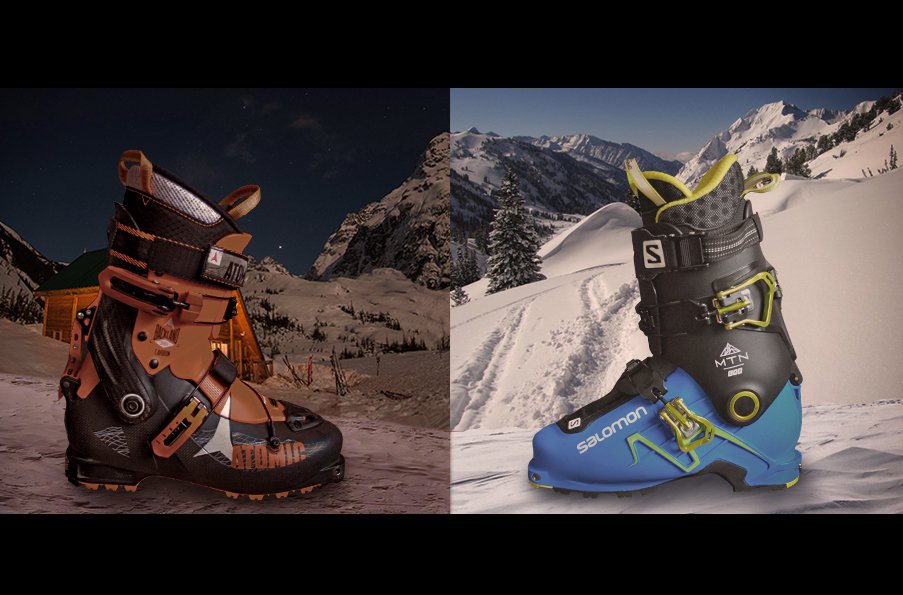
Overview
Side by side the boots do look very different and this brings up my first point.
So these are two different boots, but that is pretty obvious looking at them.
The Salomon I would be testing is the 2016 MTN Lab.
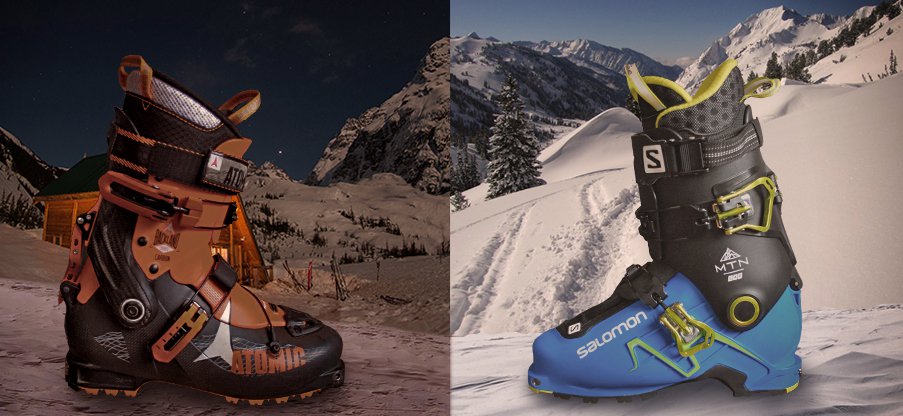
Salomon are offering two touring boots next season, the MTN Lab and the MTN Explore.
The Explore, which is slightly lighter (1462g) is the more dedicated touring version.
The Lab version is the model for the more aggressive skier.
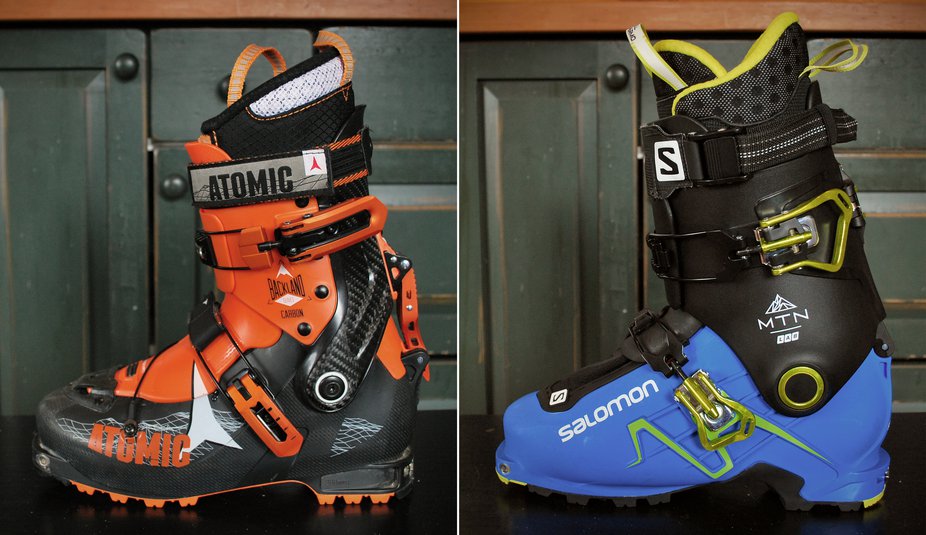
The Atomic I would be testing is the 2016 Backland Carbon.
Again not the lightest version, Atomic also have the Backland Carbon Light (942g!
The Backland only works with tech bindings so I would be using the Dynafit Radical ST bindings.
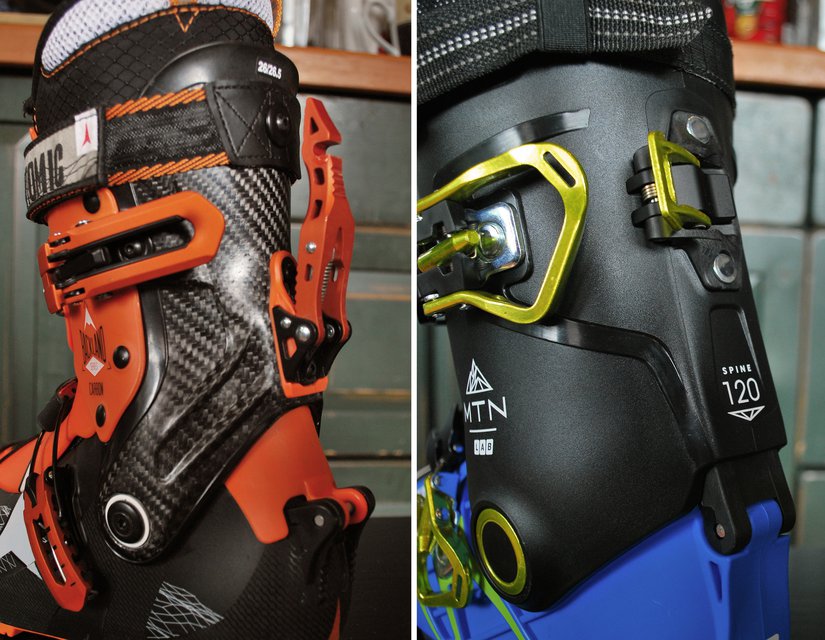
So enough talking, on to the boots.
Weight
Probably the one aspect people concentrate on the most when it comes to touring gear is weight.
But how do these numbers compare to touring boots currently on the market?
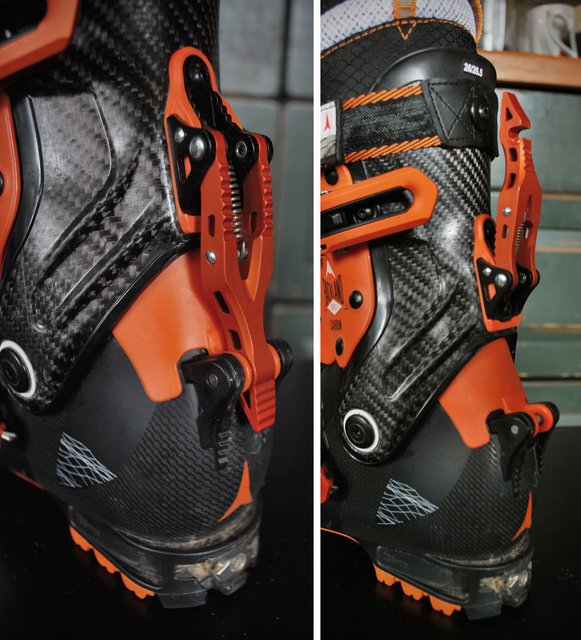
It is perhaps better to compare boots like the Dynafit TLT 6 and Mercury.
These two boots compare pretty well to the Atomic and Salomon.
On big difference between the MTN Lab and the Backland is what Atomic mix with the Grilamid.
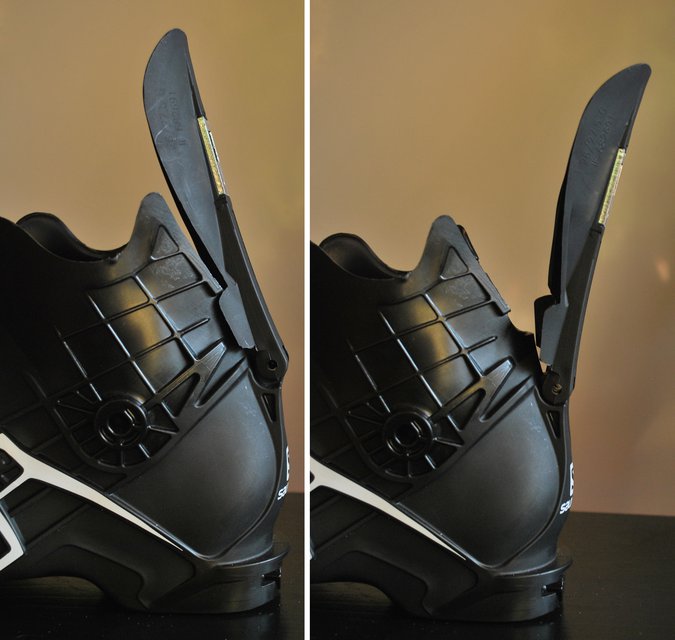
Both boots use a carbon spine although the Backland’s is much more obvious.
The Backland in comparison has a more conventional design having the cuff and the spine as one piece.
The spine on the Backland is molded carbon fiber and the front cuff is riveted directly onto the spine.
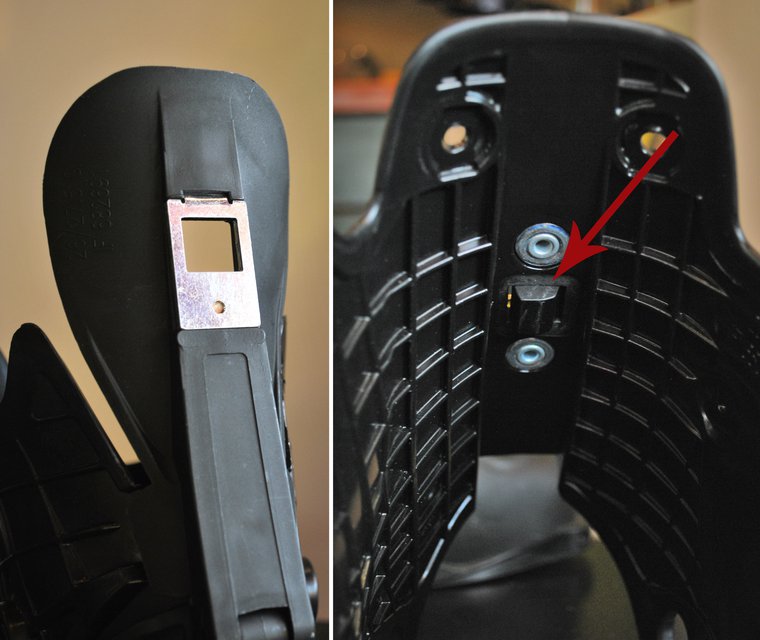
The cuff itself is very different and one of the most obvious differences when you first try the boots.
The Backland has a much shorter overall cuff at the front.
By using the tongue as well as the cuff, it almost feels like a 3 piece/ overlap hybrid.
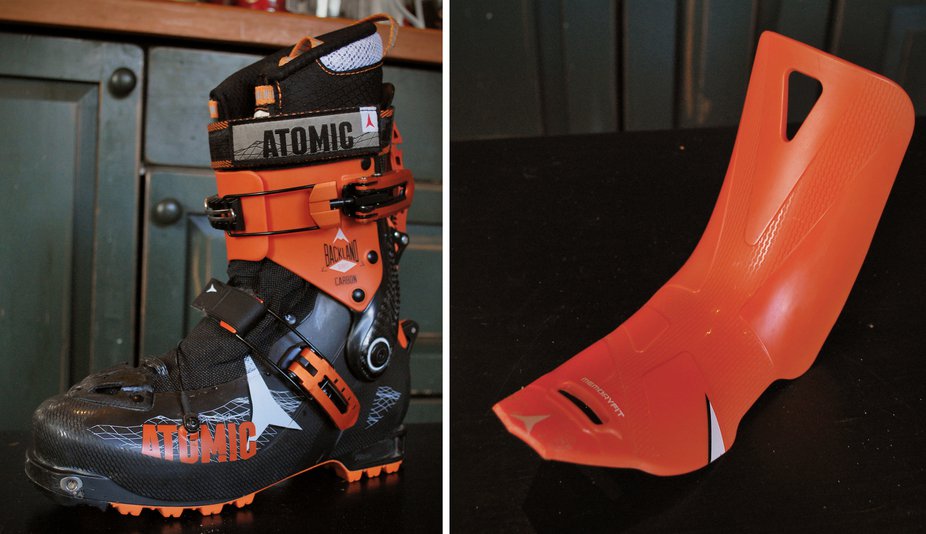
The mechanism on the Backland is easier to understand.
Pull the lever up and the cuff is free to move.
The lever has a spring inside to keep it up when not in ski mode.
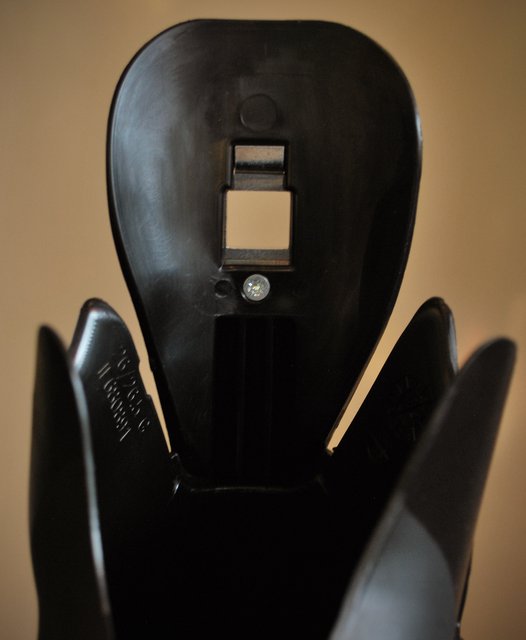
It is very simple but also incredible effective.
The lever action feels very strong and when in ski mode there is very little play in the cuff.
The connection feels positive and does not feel as though it will give.
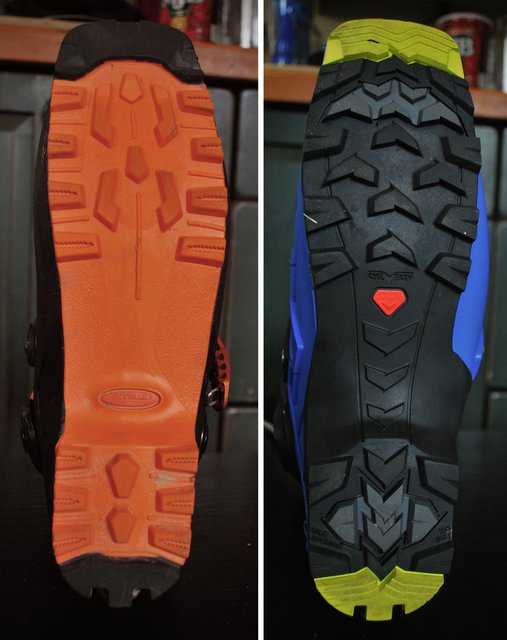
On a Dynafit boot the top buckle also acts as the walk mode.
Because the system can be hard to understand, Salmon lent me a demo boot to demonstrate the spine.
The cuff sits over the lower shell and this spine.
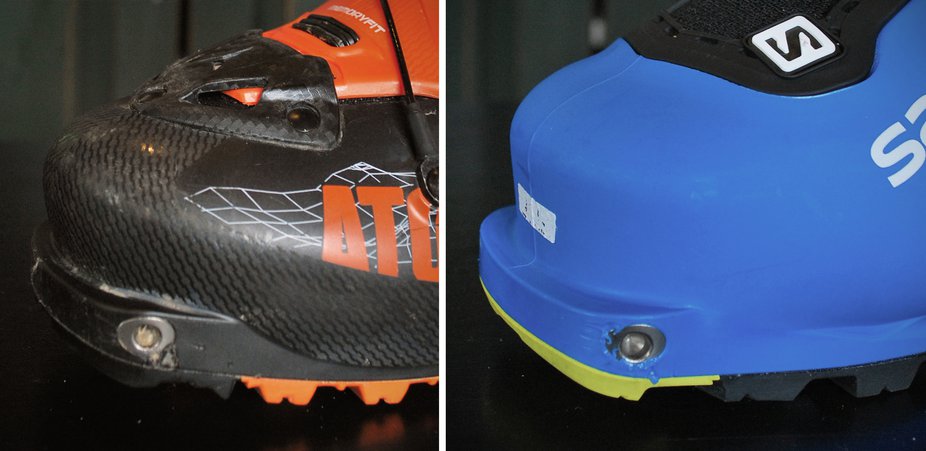
The system Salomon have gone for is very similar to the method Dynafit use.
Beneath the cuff is the spine which is mounted on a pivot at the top of the heel.
When upright the spine rests against the lower shell but it has the ability to pivot backwards.
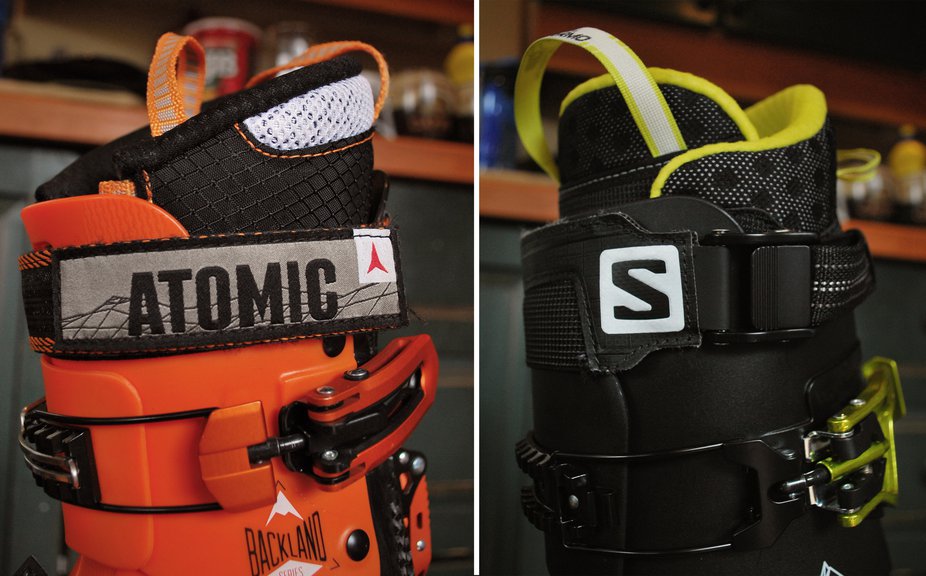
The left image shows the spine with the hole for the cuff block.
Although slightly more complex then the Backland it gives if anything an even more solid connection.
The tongue can then be re-inserted when you are ready to ski, to stiffen the boot back up.
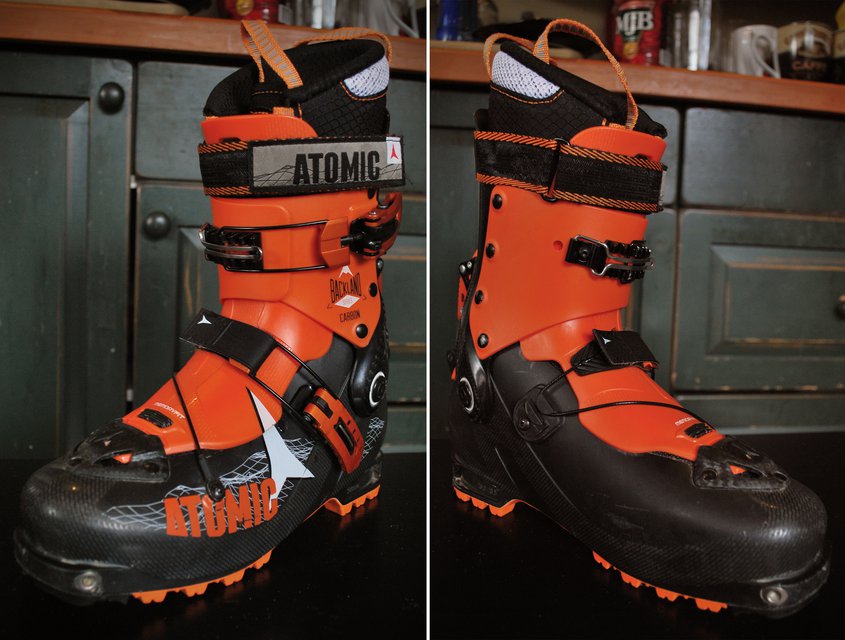
In this respect the Backland certainly feels much more like a traditional touring boot.
The walking motion is very, very good and without the tongue really does feel effortless.
The MTN Lab in comparison feels more like a freeride boot with a much improved walk function.
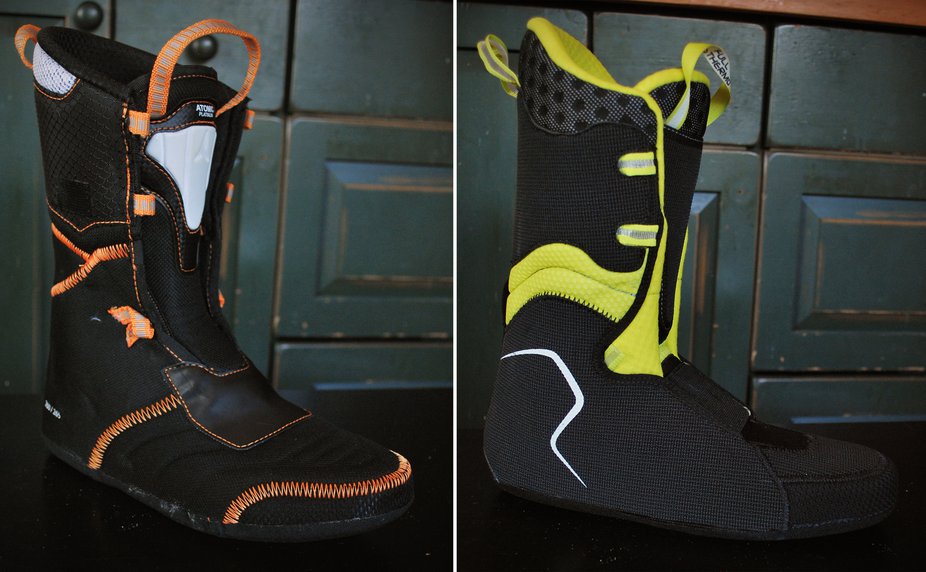
They certainly look nothing like the boots park riders will be used to riding.
The MTN Lab in comparison looks more like a traditional boot and that is because, it is.
However using this short sole method allows the Backland to really play its ace.
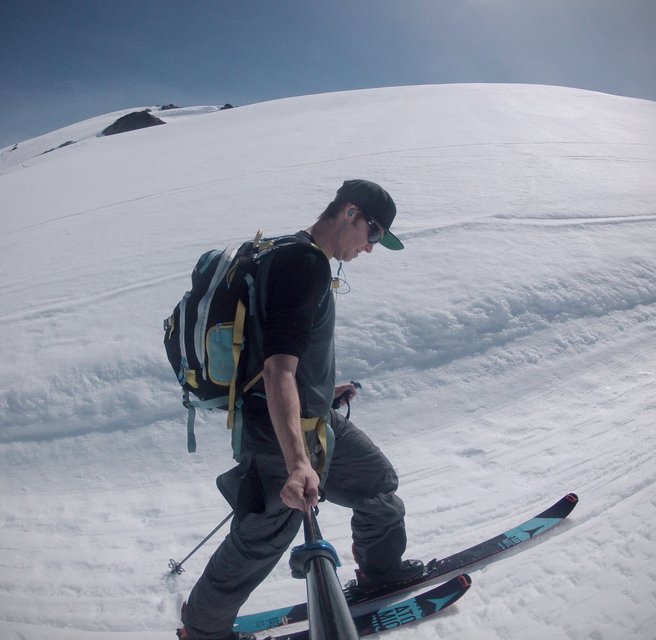
Both boots offer the option of using the top buckle in open position to better aid the ROM.
One end of a cable is attached to the shell and the other end is attached to a buckle.
The power straps again point to the differences between the two designs.
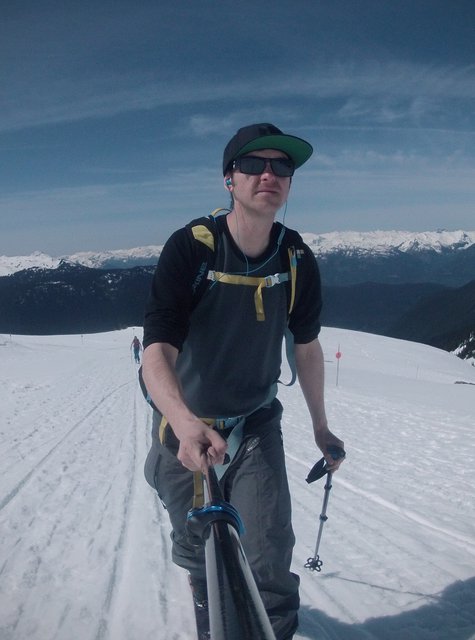
The Backland maintains the lightweight theme and goes for a minimal narrow power strap.
The MTN Lab in comparison uses a similar strap to that found on Salomon’s race boot’s.
If you have used a Booster strap before, the MTN Lab uses basically the same thing.
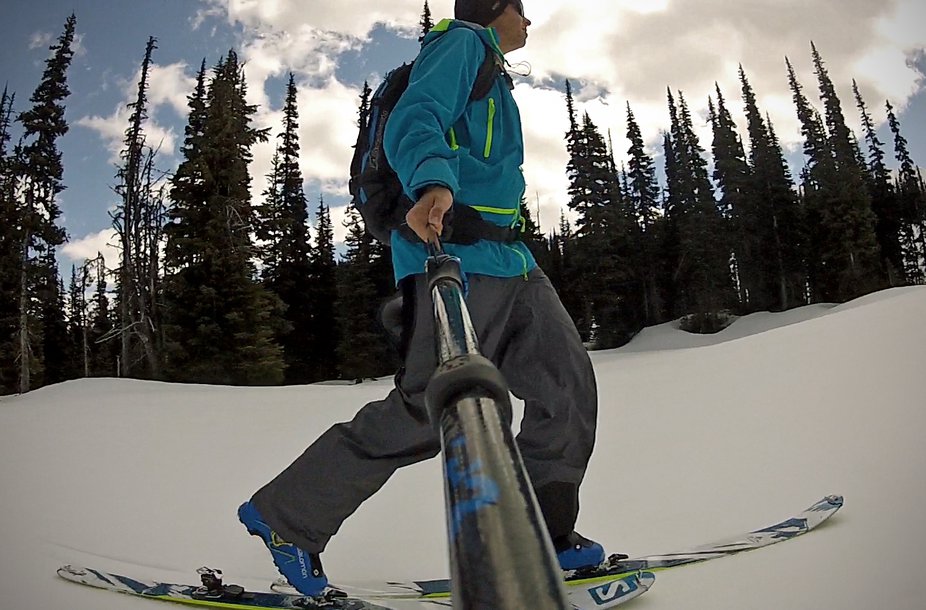
Yes it adds some weight but it will certainly improve the performance of the boots in ski mode.
Liner
The liner is another area where the Backland really saves weight.
Holding both liners the Atomic is noticeably lighter but it is also nothing like as padded or as supportive.
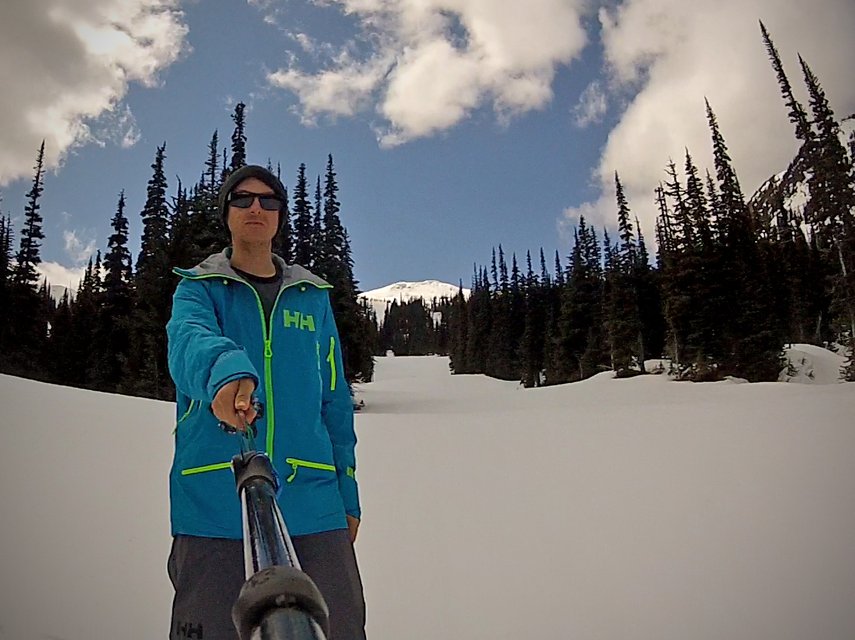
The Salomon is much firmer all over.
The lower part is slightly more forgiving and a slight shape has been added for the ankle pockets.
The cuff is stiffer still as is the tongue.
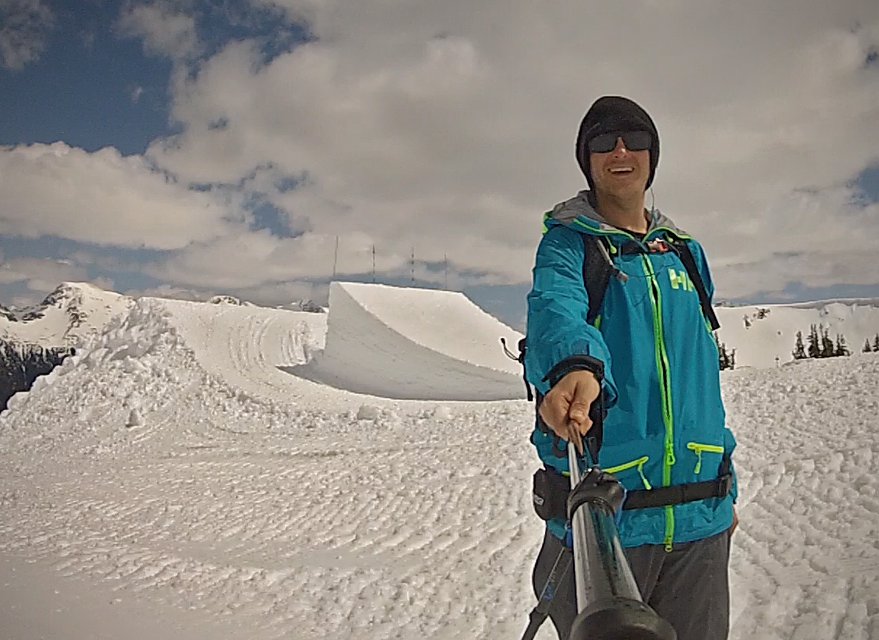
When it came to adding my footbeds to the Atomic’s I found something that did make me laugh.
So after looking closer at both boots it would certainly seem that these are two very different boots.
The Fit
The first thing I wanted to do was shell check the length of the atomic.
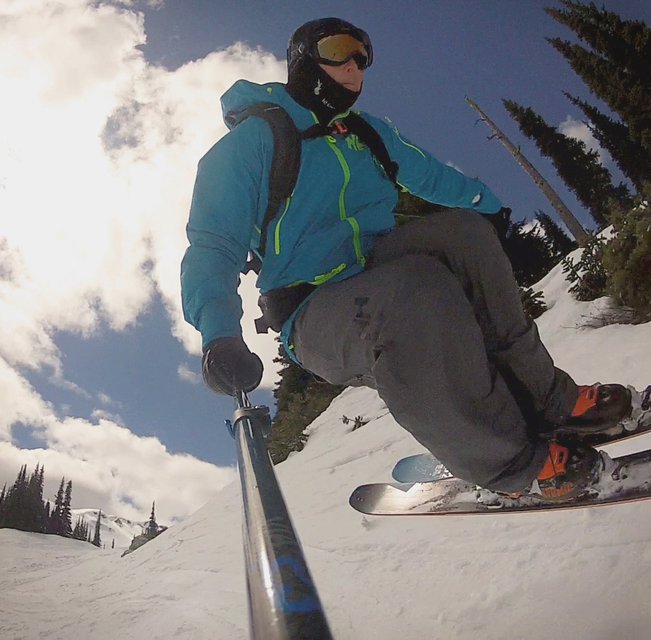
One point to note with both boots is, you would go with your regular alpine boot size.
Atomic have gone for a rounder toe box more similar to what you would find on the Redster boot.
The Salomon shape is a little different.
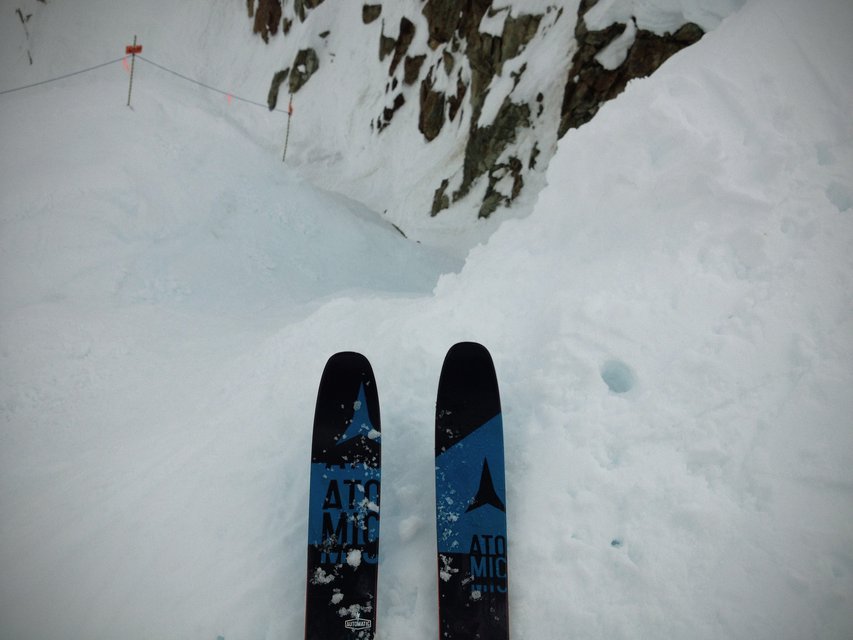
On both boots I did find there were slight fit issues out of the box.
The Backland was good in the forefoot but was very tight on my heels.
Getting the boots to fit well showed just how effective Atomic’s Memoryfit is.
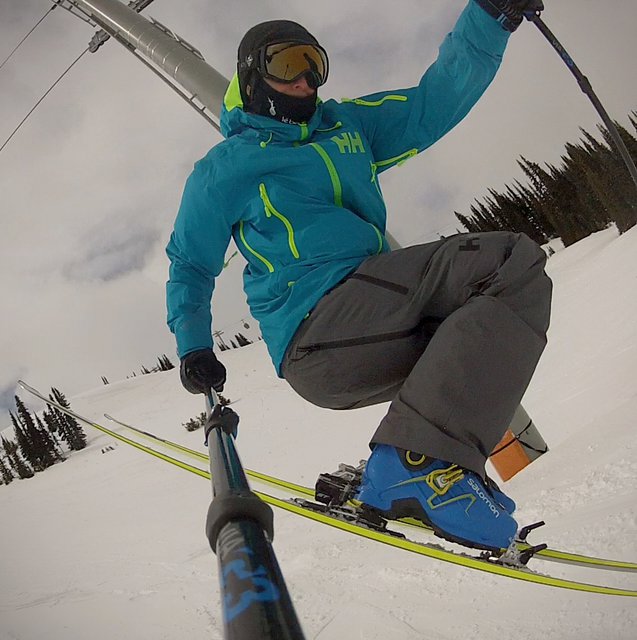
I padded my instep a little but that was it.
After letting the boots cool the fit was perfect.
The Salomon’s on the other hand took a little more effort.
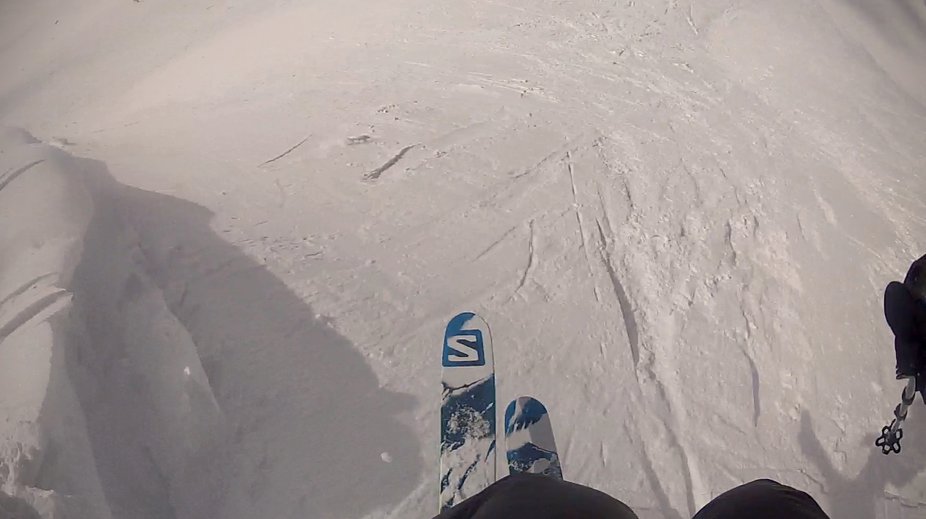
The MTN Lab is unfortunately not a custom shell boot so I had to do all the stretching manually.
So with both boots fitted there was nothing left to do but try them out.
My first few hikes were up Flute which is just off the side of Symphony on Whistler mountain.
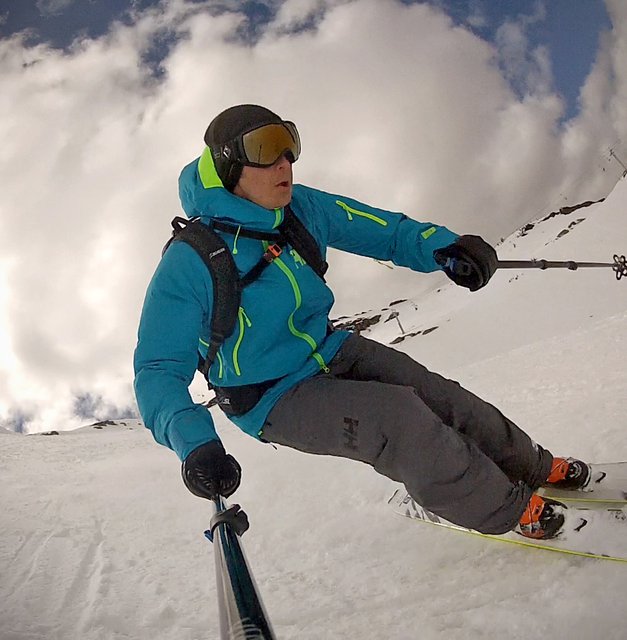
The cuff is almost completely friction free and without the tongue the motion is amazing.
I have actually worn hiking boots with less motion in the ankle.
Having the cable cross the foot twice means there is more hold over the instep then a single buckle.
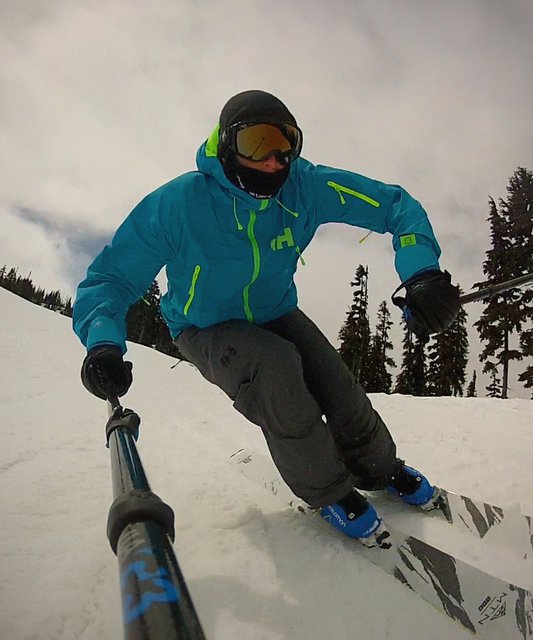
The second aspect which really helps in my opinion is the liner it’s self.
When you get hot and sweaty in a liner, this can also lead to problems.
Having as few things as possible to do at the top means more time for skiing.

If climbing as many vertical feet in a day is your thing you will love these boots.
I really like this as again not having to adjust boots at the top really saves time.
The walking motion is again very good and the backwards motion is close to that of the atomic.
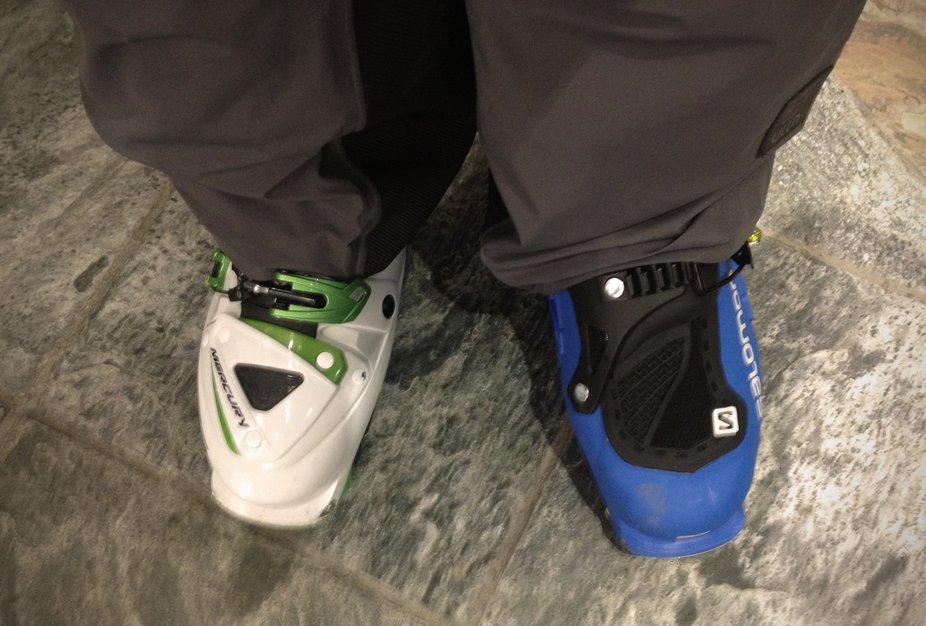
The peak in the distance is where I would be climbing too.
With Symphony lift closed I skied down through some of the glades to the bottom of the lift.
At the bottom I put the skins on and set off to attempt to reach the peak of symphony.
I decided to give my legs every chance possible so went for the lightweight MNT Explore skis.
This is not what you would usually expect to find at the top of a climb.
Apart from the heel issue I was absolutely fine in the boots.
No it is not as good as the Backland uphill but it really is very good.
With the boot in ski mode the forward flex is actually surprisingly stiff.
It does take a little getting used too but I never worried too much about overpowering the boot.
The lateral stiffness is amazing but you would expect that from a carbon cuff.
Although I have skied these lines before, I must admit I was quite nervous standing at the top.
The cuff of the boot although stiff when locked does not feel the most supportive to me.
This became especially evident when skiing the wider skis like the 115mm MTN Lab.
For more mellow descents these boots are great.
To say they felt solid would be an understatement.
This stiffness in the cuff really gives you the confidence to attack.
I would not be worried at all about using the MTN Lab boots on wide skis.
Would I ride these boots in big, steep terrain?
Absolutely, they feel as good if not better then a lot of alpine boots I have tried.
If your aim for touring is to access some big zones these are your boots, seriously.
Carving on groomers I must admit they feel excellent.
This day was no different and I was drunk by 10am.
The rest of the day was spent straight lining things and jumping over stuff or attempting too at least.
Even with the toe locked I had a few big pre-releases and some big falls.
If your average riding is not too aggressive the Backland will do fine.
You could potentially buy this boot and never tour but still be very happy with your purchase.
Although looking rather odd I do find it really allows you to feel the differences.
In all honesty they felt very similar.
I switched to the MTN Lab skis and set off hiking to the Peak of Whistler from the Roundhouse.
Having tried both I understand what he meant about not removing the tongue being a big bonus.
Although removing the tongue does not take long it is just one extra step you oughta take.
Overall I must admit I was very impressed by the MTN Lab.
In reality the MTN Lab really out paced the Mercury on the climbs something I really did not expect.
But that is my issue with them, skiing reasonably hard.
A big part of that is the fact you are so limited by bindings.
The MTN Lab on the other hand really had not appealed to me before testing.
How wrong I was.
The MTN Lab really is quite astonishing.
Quite how Salomon have managed to make a boot so light yet still so powerful is amazing.
Do your feet a favor and check them out.
Next week its back to the park for my reviews.
To start the week I have a Pro Rider Setup article featuring Noah Wallace.
To keep up to date with what I’m currently testing follow me on Instagram@Tompietrowski